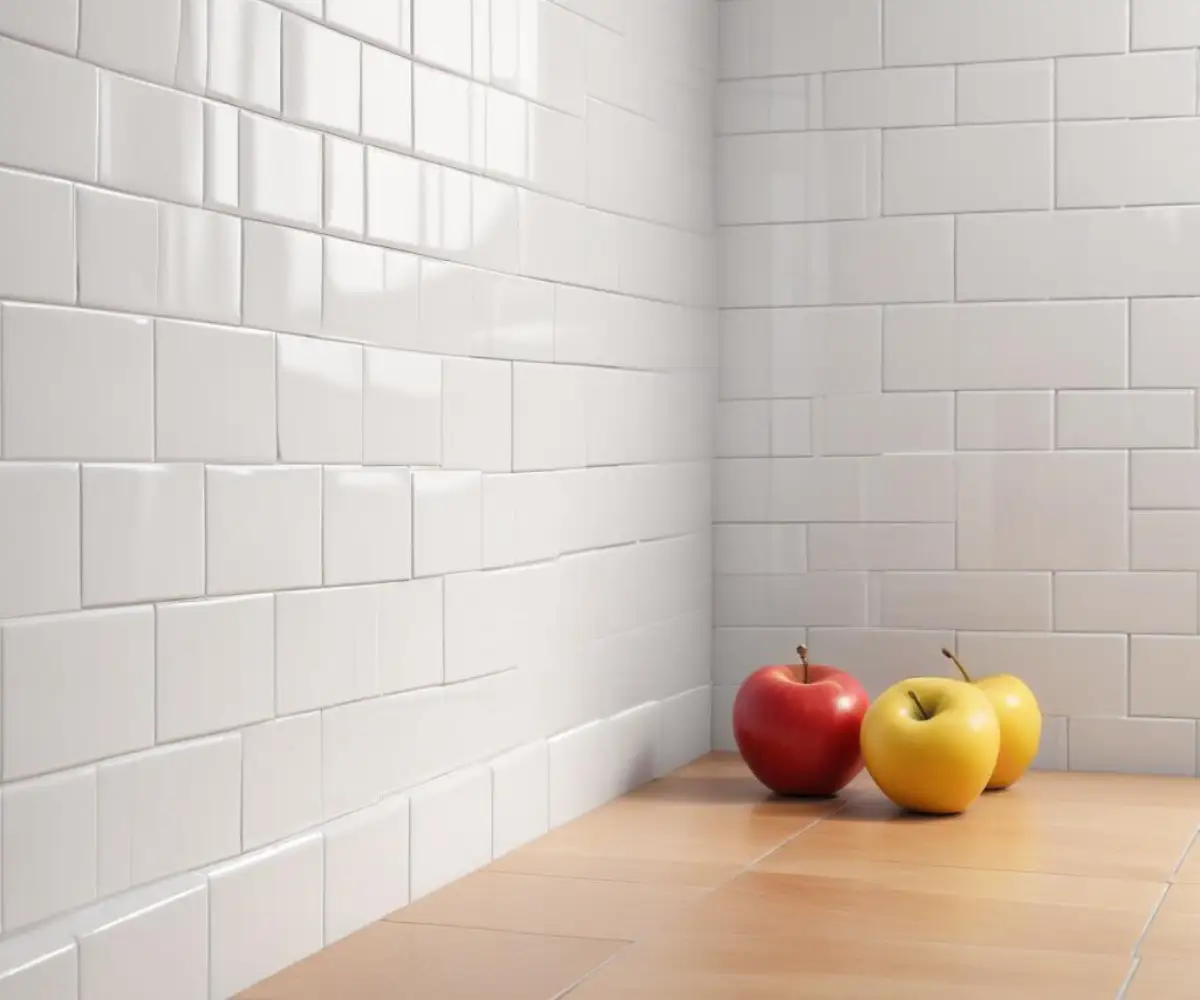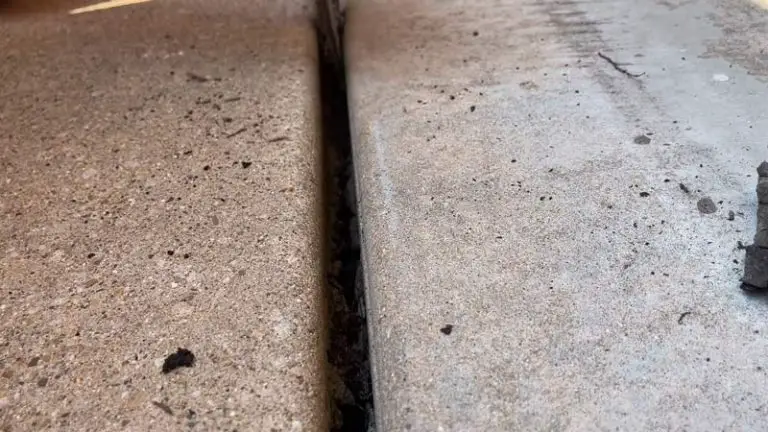Snow White vs Bright White Grout: Don’t Make This #1 Mistake
Choosing a grout color seems like a minor detail in a major tiling project, but it’s a decision that can dramatically alter the final look of your space. Many homeowners get stuck on what appears to be a subtle choice: snow white vs bright white grout. This single decision can mean the difference between a seamless, blended wall and a crisp, defined tile pattern.
The wrong choice can lead to regret, making your beautiful new tiles look dingy or creating a visual effect you didn’t intend. Understanding the nuances between these two popular shades is the key to achieving a professional, polished finish that you’ll love for years to come. This guide breaks down the critical differences to ensure you select the perfect white for your project.
You'll Learn About
What’s the Real Difference? It’s All in the Undertones
The primary distinction between snow white and bright white grout lies in their undertones. While both are white, they interact with light and surrounding colors in fundamentally different ways. Mistaking one for the other is a frequent DIY pitfall.
Think of it like choosing a white paint for your walls; there are dozens of shades, each creating a unique mood. Grout is no different. The subtle warmth or coolness of the grout color will either complement or clash with your tiles.
Bright White: The Pure, Crisp Choice
Bright white grout is a pure, stark white with neutral or cool undertones. It contains very little to no visible pigment, giving it a crisp and clean appearance. This is the color most people picture when they think of “white grout.”
Because of its purity, bright white creates a high-contrast look, especially when used with colored or even other white tiles. It sharply defines each tile, making the tile’s shape and the overall pattern—like herringbone or subway—a prominent design feature. This choice is excellent for modern, minimalist, or contemporary aesthetics where clean lines are desired.
Snow White: The Softer, Warmer Alternative
Snow white grout, despite its name, is typically a slightly off-white shade with warm, creamy, or sometimes faintly gray undertones. The name can be misleading, as it’s often not the whitest option available. Different brands have their own unique formulations for snow white, so the exact hue can vary. For example, some may have a subtle beige or ivory tint.
This hint of warmth allows snow white to create a softer, more blended look, particularly with white tiles. It reduces the stark contrast seen with bright white, resulting in a more monolithic and seamless surface. This makes it a fantastic choice for traditional, farmhouse, or transitional designs where a less jarring, more cohesive appearance is preferred.
Visual Impact: How Each White Transforms Your Tile
The visual effect of your grout choice is immediate and significant. Bright white makes a bold statement by outlining each tile, while snow white aims to unify the surface for a subtler effect. The right choice depends entirely on the design goal for your space.
Consider whether you want the tile itself or the pattern it creates to be the main focal point. Your grout color will direct the eye and define the overall character of the installation.
Bright White for a Bold, Graphic Look
If you want your tile pattern to pop, bright white is the way to go. It acts like a frame for each tile, emphasizing the grid and geometry of the layout. This is why it’s a classic pairing with white subway tiles for a clean, graphic appearance that feels both timeless and modern.
This high-contrast effect is also ideal for making colored tiles appear more vibrant. The stark white lines make the tile color the star of the show. Be aware that this precision also means any imperfections in tile spacing will be more noticeable.

Snow White for a Seamless, Elegant Finish
For a softer, more elegant aesthetic, snow white is the superior choice. When paired with white tiles, it minimizes the appearance of grout lines, creating a nearly continuous surface. This can make a small space feel larger and less busy.
This blending quality is also more forgiving of minor installation mistakes, as the less-defined lines help hide small variations in spacing. If your tiles have natural variations or a handmade quality, snow white grout can complement their texture without competing for attention.
The Practical Side: Cleaning, Staining, and Long-Term Maintenance
Beyond aesthetics, practical considerations like maintenance should heavily influence your decision. All light-colored grout requires upkeep, but the specific shade of white can make a difference in how easily dirt and stains become visible.
The location of the tile is crucial. A kitchen backsplash has different maintenance needs than a high-traffic bathroom floor, and your grout choice should reflect that reality.
Which White Grout is Easier to Keep Clean?
Here’s the hard truth: no white grout is truly “easy” to keep clean, but bright white is often considered the most challenging. Its stark, pure color means that even the slightest discoloration from dirt, mildew, or spills is immediately obvious. It offers nowhere for stains to hide.
Snow white, with its subtle off-white or creamy undertones, can be slightly more forgiving. The hint of color can help camouflage minor staining or the natural darkening that occurs over time. However, both options require diligent cleaning and, most importantly, proper sealing to resist moisture and stains, especially in wet areas like a shower. If grout maintenance is a major concern, you may even consider whether you can replace grout with caulk in shower corners and joints where movement occurs.
Quick Comparison: Snow White vs. Bright White
To simplify the decision, here is a direct comparison of the key attributes of each grout color. Use this table as a quick reference guide to match the right grout to your project’s goals.
| Feature | Bright White Grout | Snow White Grout |
|---|---|---|
| Undertone | Neutral to cool; pure white | Warm; slightly off-white, creamy, or beige |
| Visual Effect | High-contrast, defines each tile, graphic | Low-contrast, blends tiles, creates a seamless look |
| Best Aesthetic | Modern, minimalist, contemporary | Traditional, farmhouse, classic, transitional |
| Pairs Best With | White subway tile, bold colored tiles | White tiles (for a blended look), natural stone, textured tiles |
| Maintenance | Shows dirt and stains very easily | Slightly more forgiving of minor discoloration |
| Forgiveness | Highlights installation imperfections | Helps camouflage minor spacing irregularities |
Beyond the Basics: The Hidden Factors No One Talks About
Two critical factors that are often overlooked when choosing between snow white and bright white are lighting and brand variations. These elements can drastically change how a grout color appears once it’s installed in your home, and ignoring them can lead to unexpected and disappointing results.
What looks perfect in the hardware store can look completely different on your wall. This is where a little extra diligence pays off.
How Lighting Changes Everything
The lighting in your room will have a profound impact on your grout’s final appearance. Natural daylight tends to show the truest color, while artificial lighting can cast a warm or cool hue. A warm, incandescent bulb can make even bright white grout appear softer and more yellow, while a cool, LED light can amplify the starkness of bright white and make snow white look grayer.
Before committing, it is essential to view grout samples in the actual room where they will be installed. Check them in the morning, afternoon, and evening under both natural and artificial light to get a complete picture of how the color will behave throughout the day.
Not All Brands Are Created Equal
A crucial piece of expert advice is that “Snow White” from one brand may not match “Snow White” from another. Major manufacturers like Mapei, Polyblend, and Laticrete each have their own proprietary color formulas. One brand’s snow white might have a distinct beige undertone, while another’s might lean slightly gray.
Never assume the color name is standardized across the industry. Always get a physical color chip or sample stick from the specific brand you plan to use. Comparing these samples directly against your tile is the only way to guarantee a perfect match for your design vision.
A Step-by-Step Guide to Making the Right Choice
Feeling confident in your grout selection comes down to a simple process of testing and observation. Follow these steps to avoid guesswork and ensure the color you choose is the color you get.
- Get Physical Samples: Do not rely on printed brochures or online images. Obtain physical grout color sticks or cards from the manufacturer.
- Test Against Your Tile: Place the grout samples directly between your chosen tiles. This side-by-side comparison is the most effective way to see how the undertones interact.
- Evaluate in Your Space: Take your tile and grout samples into the room where they will be installed. Observe them at different times of day to see how the changing light affects the colors.
- Consider the Bigger Picture: Look at the samples in context with other elements in the room, such as cabinet colors, countertops, and wall paint, to ensure a cohesive design.
- Think About Longevity: Be honest about your tolerance for cleaning. If you’re in a high-traffic area, consider if additives might be beneficial. Researching topics like is grout maximizer worth it can provide insight into enhancing durability and stain resistance.
Common Mistakes to Avoid
Choosing grout involves more than just color. Avoiding common application and material mistakes is just as important for a lasting finish.
One frequent error is using grout in situations where a flexible sealant is required. For instance, you should never use grout as plaster for repairs, as it lacks the necessary adhesive and structural properties for such applications.
Another critical mistake is failing to properly seal the grout, especially in kitchens and bathrooms. Unsealed grout is porous and will quickly absorb moisture, leading to stains and mildew. Always apply a high-quality grout sealer after the grout has fully cured to protect your investment.
Final Verdict: Which White Grout Should You Choose?
There is no single “best” white grout—only the best one for your specific project. The choice between snow white and bright white is a matter of design intent and practical considerations.
Choose Bright White Grout if:
– You want a crisp, clean, high-contrast look.
– Your design is modern, minimalist, or contemporary.
– You want to emphasize the shape of your tiles and the installation pattern.
Choose Snow White Grout if:
– You desire a softer, warmer, more blended appearance.
– Your aesthetic is traditional, classic, or farmhouse.
– You want to create a seamless surface and are looking for a slightly more forgiving option for maintenance.
By understanding the subtle yet powerful differences in undertone, visual impact, and maintenance, you can confidently select the perfect white grout to beautifully complete your tile project.

